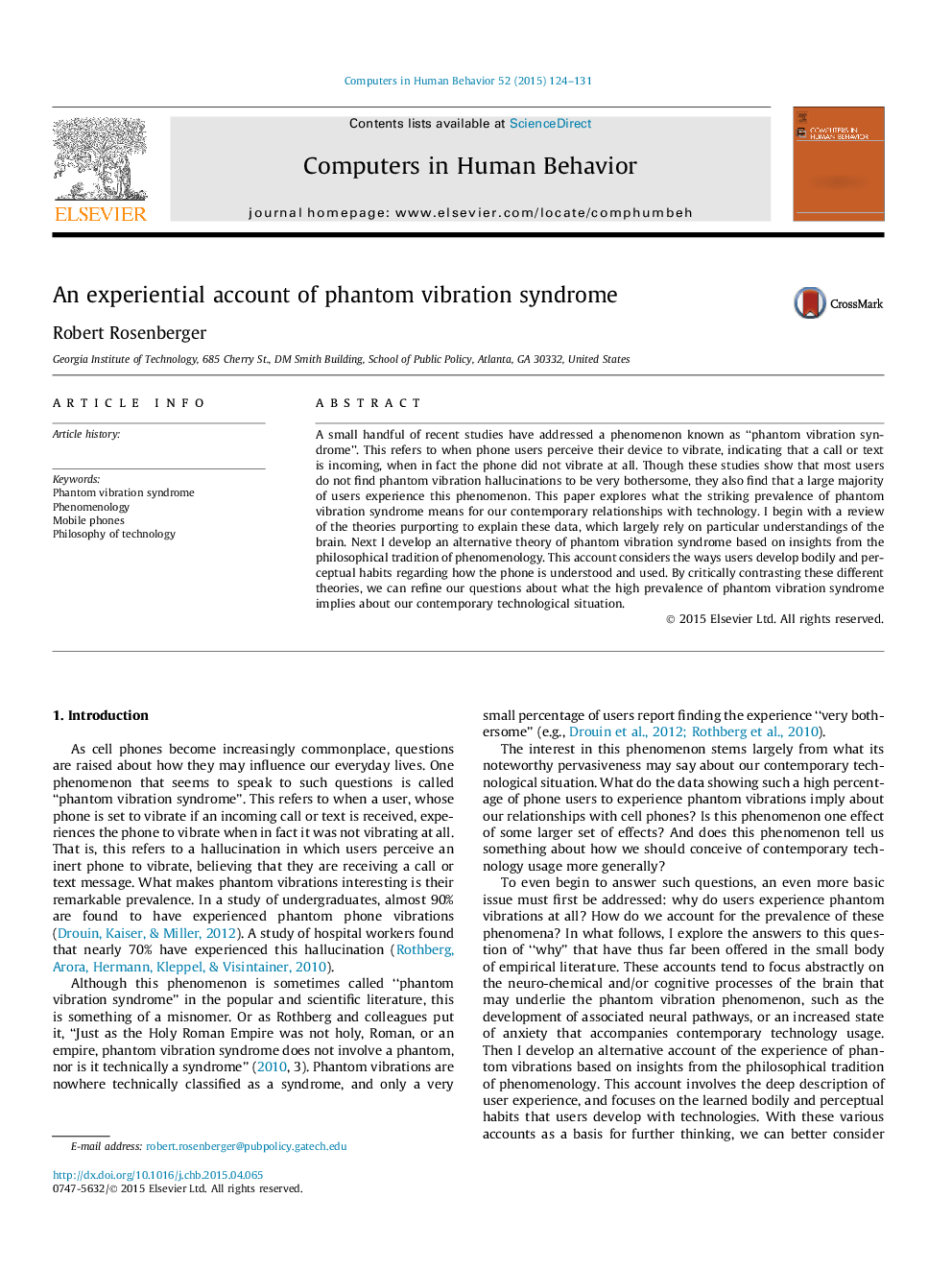| Article ID | Journal | Published Year | Pages | File Type |
|---|---|---|---|---|
| 6837965 | Computers in Human Behavior | 2015 | 8 Pages |
Abstract
A small handful of recent studies have addressed a phenomenon known as “phantom vibration syndrome”. This refers to when phone users perceive their device to vibrate, indicating that a call or text is incoming, when in fact the phone did not vibrate at all. Though these studies show that most users do not find phantom vibration hallucinations to be very bothersome, they also find that a large majority of users experience this phenomenon. This paper explores what the striking prevalence of phantom vibration syndrome means for our contemporary relationships with technology. I begin with a review of the theories purporting to explain these data, which largely rely on particular understandings of the brain. Next I develop an alternative theory of phantom vibration syndrome based on insights from the philosophical tradition of phenomenology. This account considers the ways users develop bodily and perceptual habits regarding how the phone is understood and used. By critically contrasting these different theories, we can refine our questions about what the high prevalence of phantom vibration syndrome implies about our contemporary technological situation.
Related Topics
Physical Sciences and Engineering
Computer Science
Computer Science Applications
Authors
Robert Rosenberger,
